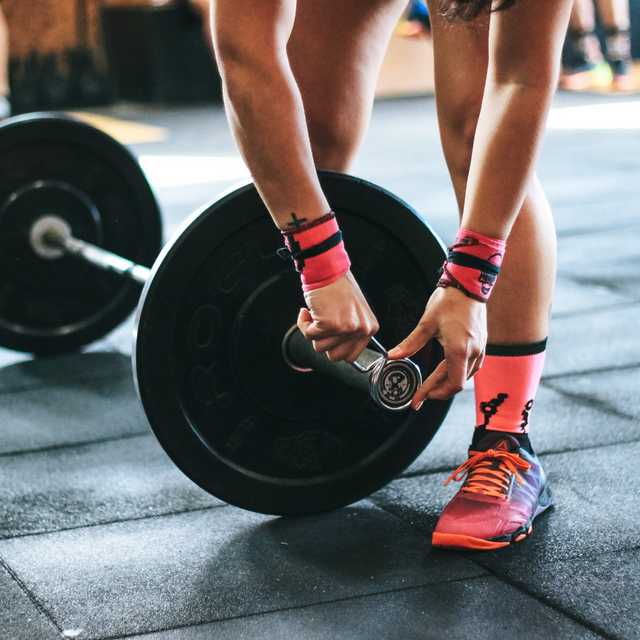Choosing The Weights

This is a difficult part but that does not mean that an experienced lifter can not adjust the work weights. Here are a couple of tips to keep in mind.
- Work with progressively heavier series
Some consider the warm-up series a waste of time, but they really allow you to lift heavier. Your fabrics become more elastic, and you have practiced the movement before embarking on the heavy weights.
It is important to keep in mind that although a bodybuilder trains to muscle failure, the warm-up series never lead to failure.
You must stop these warm-up series long before muscle failure. For example, for a bodybuilder who wants to make heavy series of 100 kilos, training in a range of 8-12 repetitions, the heating weights could be 60, 80 and 90 kilos.
- Train heavy at the start of training
Because your energy begins to waver in the course of a hard workout, choose the most difficult exercises at the beginning of your training session, when you are cooler. You can even train in the lowest area of the hypertrophy range, choosing a weight in which you can perform alone (muscle failure) 8 repetitions.
In the course of your training you should try to train with different intensities so it includes a series of 10 repetitions (close to failure) and 12 repetitions as the session progresses.
With warm-ups included, start your exercises in the lowest area of your target repetition range and leave your series of 12 or more repetitions for the end of the training.
- Be aware of the progressive overload
The muscles adapt to the training by getting bigger and stronger. Strength practitioners and bodybuilders know that the greatest adaptations occur in fast-twitch fibers. Thanks to these adaptations you can do more repetitions than before with any kilaje.

Try this method: When you can do 2 more repetitions of the goal, during two consecutive workouts, increase the weight. For example: If you started in the pres of banking with 8 repetitions of 100 kilos, but now you can do 10 repetitions and you are able to do it in two consecutive training, increase the weight.
For torso exercises such as bench press increases the weight around 5%. So instead of using 100 kilos, use 105. For lower-body exercises like the squat, increase the weight by approximately 10%. So instead of using 100 kilos, use 110.
Now the normal thing would be that you could do 8 repetitions with 105 kilos in the pres of banking. Imagine that you have already gained mass and strength. To continue having progress, you must increase the challenge for your muscles by increasing the resistance again.

As you see, you must progressively increase the load or you will stagnate. Self complacency is your biggest enemy whatever your goal, so forcing yourself to perform more reps or use slightly higher weights each time can help you to continue making progress.
However, even the most dedicated lifters reach a training plateau (stalemate) sooner or later. Advanced techniques in which weights are manipulated can further increase gains in size and strength, but must be done in a targeted manner, in a planned manner, never at random. You must study different techniques that allow you to cycle through your training over time.
Soon you will learn that the stronger and bigger you become, the less you will see results and improvements "by chance", and the more you will have to plan your training, that is to say "PERIODIZE".

Image: Source
You can follow me on:
Instagram: @eudinevies


Congratulations @eudinfitness! You have completed the following achievement on the Steem blockchain and have been rewarded with new badge(s) :
Click on the badge to view your Board of Honor.
If you no longer want to receive notifications, reply to this comment with the word
STOPDo not miss the last post from @steemitboard: